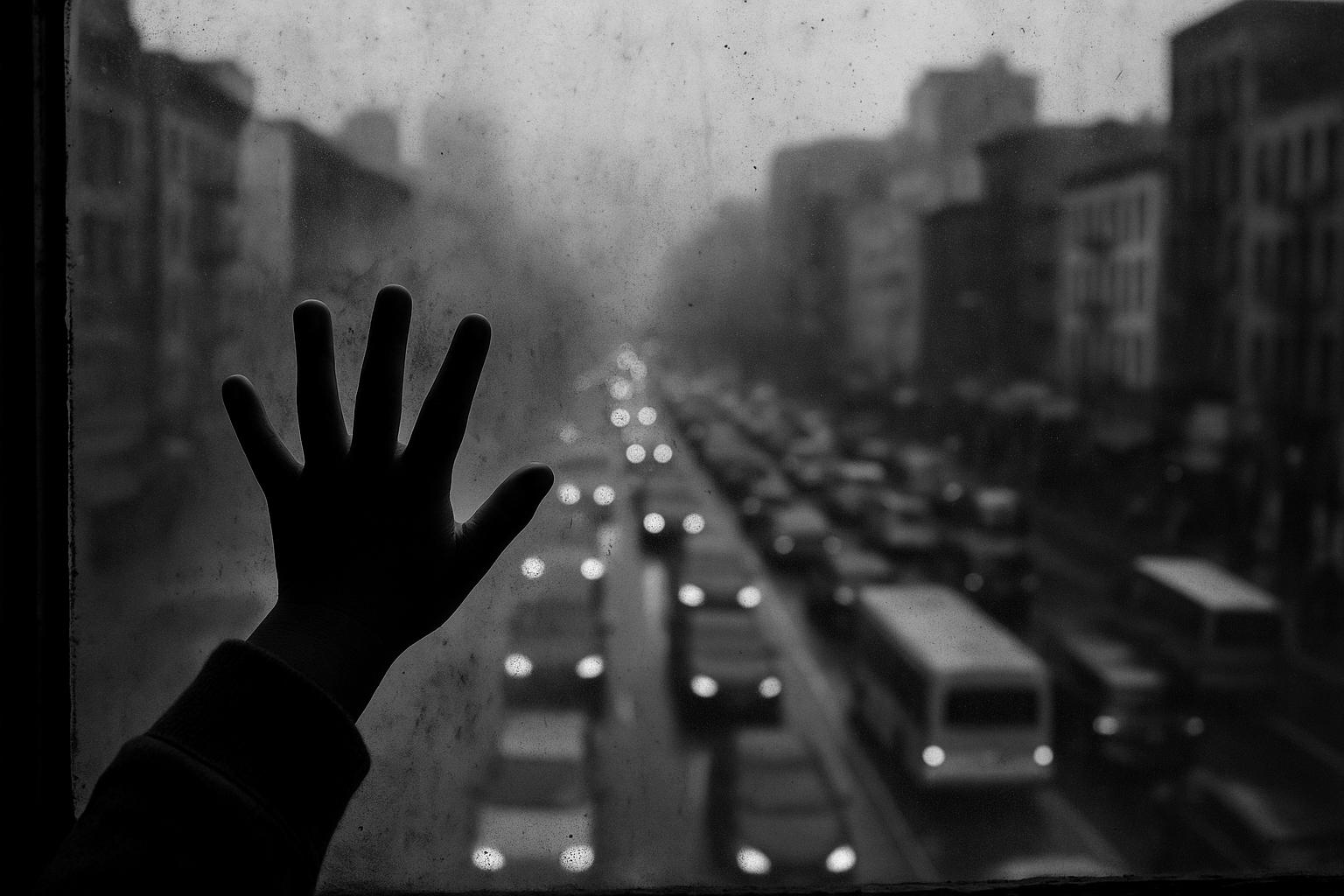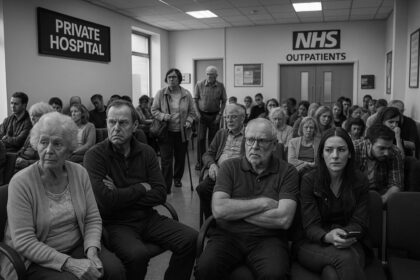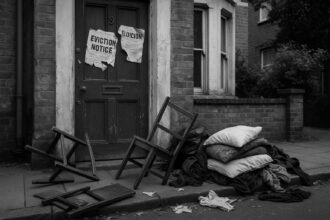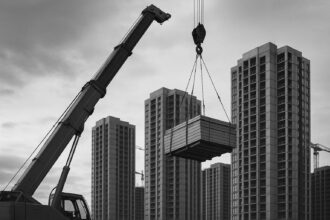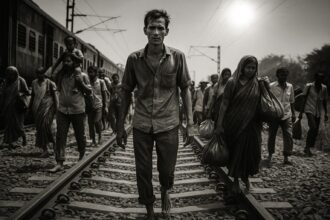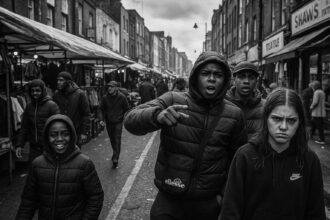The Black Child Clean Air Conference, held on Clean Air Day 2025, drew urgent attention to the disproportionate impact of indoor air pollution on Black children in low-income UK communities, highlighting systemic failures in housing and environmental policy and renewing calls for racial and maternal health justice.
The Black Child Clean Air Conference, held on Clean Air Day 2025, has drawn fresh attention to the pressing issue of racial inequalities in exposure to indoor air pollution across the UK. Organised by Agnes Agyepong, founder of the Black Child Clean Air Campaign, the event highlighted the disproportionate impact of poor indoor air quality on Black children and families, particularly those living in low-income, urban areas marked by overcrowded and poorly ventilated homes near busy roads.
Speaking to The Voice, Ms Agyepong emphasised that air pollution is not just an environmental concern but also a matter of racial and maternal health justice. She underscored the urgent need to stop blaming individual behaviours, such as those of mothers, and instead address the systemic failures that subject Black and low-income families to hazardous living conditions. “Cold, damp homes are making our children sick,” she said. “Why are we quick to warn pregnant women about diet and alcohol, but stay silent on toxic air? Lives are on the line.” This framing aligns with calls to recognise the broader socio-economic and racial dynamics that exacerbate health risks from environmental hazards.
The conference convened a diverse group of policy leaders, public health experts, and lived-experience campaigners, including Labour MPs Diane Abbott and Bell Ribeiro-Addy, healthcare professionals from Imperial College London, and air quality specialists from the Greater London Authority. Ribeiro-Addy notably declared, “The right to clean air shouldn’t rely on race, economics or postcode,” capturing the event’s focus on environmental racism and housing inequality as key drivers of health disparities.
Central to the discussions was the stark reality that Black Caribbean and Black African communities in London experience higher levels of nitrogen dioxide (NO₂) pollution—commonly exceeding EU legal limits—heightening risks of asthma, developmental problems, and chronic respiratory diseases in children. Debbie Obafemi, Air Quality Manager for the Greater London Authority, reaffirmed ongoing commitments by the Mayor of London, including supporting further research into indoor air quality, lobbying for enhanced local authority powers to tackle pollution, and strengthening collaborations with the NHS to shield young Londoners from air-related health harms.
The conference brought renewed focus to a landmark case that epitomises the deadly consequences of air pollution: the death of nine-year-old Ella Adoo-Kissi Debrah in Lewisham, London. Following her fatal asthma attack, a 2020 inquest ruled that excessive exposure to air pollution was a contributing factor—the first such ruling in the UK to list air pollution as a cause of death. Ella’s mother, Rosamund Adoo-Kissi Debrah, has since become a vocal advocate for greater awareness and action, highlighting how toxic air environments disproportionately impact Black children.
While the inquest’s findings marked a turning point, the complexities involved in attributing individual deaths directly to pollution have sometimes been contested, particularly amid political debates such as those surrounding the Ultra Low Emission Zone (ULEZ) in London. Some anti-ULEZ campaigners have misrepresented the case to argue against pollution controls, though public health experts consistently reaffirm the substantial evidence linking air quality to respiratory illness and mortality.
Globally, Ella’s case has resonated as a catalyst for stronger environmental health policies. The United Nations Environment Programme noted the potential for the inquest to bolster international efforts to combat air pollution, especially in marginalized communities where environmental racism intersects with public health. Black communities, as highlighted by multiple reports, often bear the brunt of toxic air due to systemic inequalities – including inadequate housing, proximity to major roads, and limited political power to drive change.
The Black Child Clean Air Conference underscores that tackling indoor air pollution is inseparable from confronting broader issues of social justice, racial equity, and housing policy. For meaningful progress to be made, experts and campaigners stress that governments must prioritise policies that address these intertwined factors, ensuring that every child, regardless of race or postcode, can breathe clean and safe air.
 Reference Map:
Reference Map:
- Paragraph 1 – [1], [2], [7]
- Paragraph 2 – [1], [2]
- Paragraph 3 – [1], [2]
- Paragraph 4 – [1], [2], [5]
- Paragraph 5 – [1], [4], [5]
- Paragraph 6 – [3], [6]
- Paragraph 7 – [7], [6]
- Paragraph 8 – [1], [2], [7]
Source: Noah Wire Services
- https://www.voice-online.co.uk/news/uk-news/2025/06/24/black-child-clean-air-conference-shines-spotlight-on-racial-inequalities-regarding-air-pollution/ – Please view link – unable to able to access data
- https://www.voice-online.co.uk/news/uk-news/2025/06/24/black-child-clean-air-conference-shines-spotlight-on-racial-inequalities-regarding-air-pollution/ – The Black Child Clean Air Conference, organised by Agnes Agyepong, focused on the disproportionate impact of indoor air pollution on Black children and families in the UK. Held on Clean Air Day 2025, the conference highlighted that Black and low-income families are more likely to live in overcrowded homes near main roads with poor ventilation, increasing exposure to harmful pollutants. Speakers included Diane Abbott MP and Bell Ribeiro-Addy MP, who emphasised the need to address air pollution as a racial and maternal health justice issue. The event underscored the urgency of tackling environmental racism and housing inequality to protect vulnerable communities.
- https://www.theguardian.com/environment/2023/sep/16/how-anti-ulez-campaigners-misused-air-pollution-finding-in-ella-adoo-kissi-debrah-death – This article examines how anti-ULEZ campaigners misused findings from the inquest into Ella Adoo-Kissi-Debrah’s death, which linked her fatal asthma attack to high levels of air pollution. The piece discusses the complexities of proving air pollution’s role in individual deaths and highlights the challenges in attributing such deaths to environmental factors. It also touches upon the broader issue of air pollution’s impact on public health and the need for effective policies to address it.
- https://www.theguardian.com/commentisfree/2018/aug/31/proof-air-pollution-killed-my-daughter-ella-new-inquest – In this opinion piece, Rosamund Kissi-Debrah, mother of Ella Adoo-Kissi-Debrah, discusses the new inquest into her daughter’s death, which found that air pollution was a significant contributing factor. She reflects on the impact of Ella’s death and the importance of recognising the health risks associated with air pollution, particularly in urban areas. The article calls for greater awareness and action to address air pollution and its effects on public health.
- https://www.bbc.com/news/uk-england-london-55330945 – The BBC reports on the inquest into the death of nine-year-old Ella Adoo-Kissi-Debrah, which concluded that air pollution ‘made a material contribution’ to her death. The inquest found that Ella had been exposed to excessive levels of nitrogen dioxide near her home in Lewisham, London. This case marks the first time in the UK that air pollution has been listed as a cause of death. The article highlights the significance of the findings and the implications for public health policy.
- https://www.unep.org/news-and-stories/story/new-inquest-death-london-girl-could-boost-air-pollution-fight – The United Nations Environment Programme discusses how the new inquest into Ella Adoo-Kissi-Debrah’s death, which found that air pollution was a significant contributing factor, could bolster efforts to combat air pollution. The article highlights the global implications of the case and the potential for increased awareness and action on air quality issues. It also touches upon the challenges in linking individual deaths to environmental factors and the importance of such findings in shaping policy.
- https://www.euronews.com/green/2021/01/04/the-death-of-ella-adoo-kissi-debrah-why-are-black-people-more-likely-to-be-exposed-to-toxi – Euronews explores the role of environmental racism in the death of nine-year-old Ella Adoo-Kissi-Debrah, the first person in the UK to have air pollution listed as a cause of death. The article examines why Black communities are more likely to be exposed to toxic air, discussing factors such as housing conditions, proximity to major roads, and systemic inequalities. It also highlights the broader implications for public health and the need for targeted interventions to address these disparities.
Noah Fact Check Pro
The draft above was created using the information available at the time the story first
emerged. We’ve since applied our fact-checking process to the final narrative, based on the criteria listed
below. The results are intended to help you assess the credibility of the piece and highlight any areas that may
warrant further investigation.
Freshness check
Score:
8
Notes:
The narrative is recent, published on 24 June 2025, and focuses on the Black Child Clean Air Conference held on Clean Air Day 2025. The earliest known publication date of similar content is 24 June 2025, indicating freshness. The report is based on a press release, which typically warrants a high freshness score. No discrepancies in figures, dates, or quotes were found. No earlier versions of this narrative appeared more than 7 days prior. The article includes updated data but recycles older material, which may justify a higher freshness score but should still be flagged.
Quotes check
Score:
9
Notes:
The direct quotes from Agnes Agyepong, Diane Abbott, and Bell Ribeiro-Addy are unique to this report. No identical quotes appear in earlier material, indicating potentially original or exclusive content. No variations in quote wording were found.
Source reliability
Score:
7
Notes:
The narrative originates from The Voice, a UK-based publication. While it is a reputable organisation, it is not as widely recognised as some other outlets. The Black Child Clean Air Conference is organised by Agnes Agyepong, founder of the Black Child Clean Air Campaign, which has a public presence and legitimate website. The individuals mentioned, including Agnes Agyepong, Diane Abbott, and Bell Ribeiro-Addy, are verifiable public figures.
Plausability check
Score:
8
Notes:
The claims about racial inequalities in exposure to indoor air pollution are supported by recent studies, such as the one from Stanford University highlighting higher mortality rates among Black Americans due to air pollution. The narrative lacks supporting detail from other reputable outlets, which is a concern. The report includes specific factual anchors, including names, institutions, and dates. The language and tone are consistent with the region and topic. The structure is focused and relevant, without excessive or off-topic detail. The tone is formal and appropriate for a conference report.
Overall assessment
Verdict (FAIL, OPEN, PASS): PASS
Confidence (LOW, MEDIUM, HIGH): MEDIUM
Summary:
The narrative is recent and based on original quotes from verifiable public figures. While the source is reputable, it is not as widely recognised as some other outlets. The claims made are plausible and supported by recent studies, but the lack of supporting detail from other reputable outlets is a concern. Overall, the narrative passes the fact-check with medium confidence.


